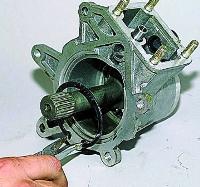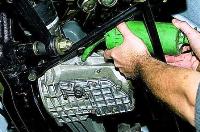Replace the fluid in the power steering system if it is excessively contaminated
The manufacturer does not give clear recommendations on the frequency of changing the fluid in the hydraulic system, so we recommend replacing it after six years, regardless of condition
Pentosin Hidraulik Fluid CHF11S is recommended by the manufacturer for use in the booster hydraulic system.
For technological reasons, on vehicles starting with VIN No. X9L21230040005880, Shell Donax TA D-21631 (Dexron II) is used in the hydraulic system, and with VIN No. X9L21230040006248 - Ravenol Dexron II D.
Cars filled with Shell Donax oil have a "*" on the reservoir, and cars filled with Ravenol Dexron II D have an "R", but these marks may not be on the latest production cars.
Dexron II fluids (red) must not be mixed with Pentosin Hidraulik Fluid CHF11S (green).
It is allowed to completely replace the fluid after flushing the booster hydraulic system.
When using Dexron II fluids, cut the usage time to half the recommended time.

Remove the coupling bolt of the booster hydraulic reservoir bracket.
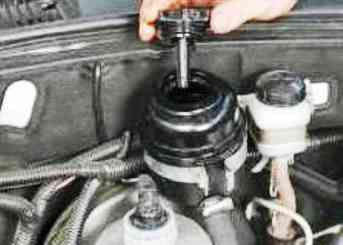
Unscrew the tank cap.
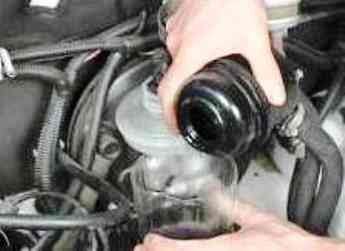
Remove the reservoir from the bracket and drain the fluid from the reservoir into a suitable container.
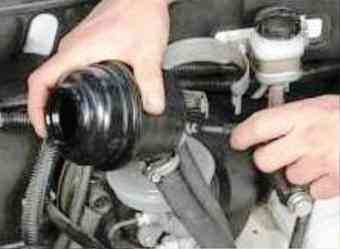
Loosen the outlet hose clamp and remove the outlet hose
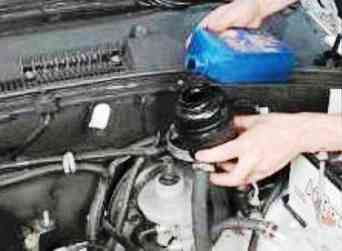
To prevent fluid from escaping, plug the hole in the tank fitting, lower the end of the outlet hose into a container for the drained fluid.
Start the engine and, turning the steering wheel from lock to lock in both directions three to four times, drain the old fluid while adding new fluid.
Repeat the operation until fresh fluid comes out of the outlet hose.
Carefully monitor the fluid level in the tank, do not allow air to enter the power steering pump.
This may damage the pump.
Install the tank in the reverse order of removal.
Add fluid up to the upper mark on the filler cap dipstick.
Bleed the power steering system
Bleeding the power steering system
The need for pumping occurs when air enters the hydraulic system during repair work or when the tightness is lost during operation.
A sign of the presence of air in the system is the wedging of the steering wheel when you try to turn it sharply.
In addition, the pump makes an increased noise when the steering wheel is turned, and the liquid in the tank usually foams.
You will need the "8" key.
With the steering wheel in the middle position, start the engine for 10-15 seconds.
Stop the engine without turning the steering wheel.
Turn the steering wheel all the way to one side.

Remove the protective cap from the air release valve
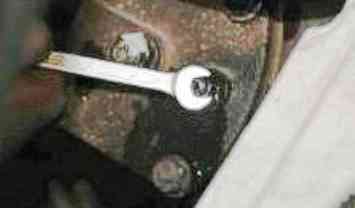
Unscrew the air release valve on the steering gear
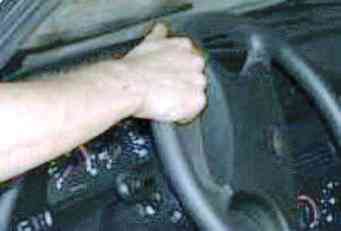
Without closing the valve, turn the steering wheel all the way to the other side. At the same time, from the valve








